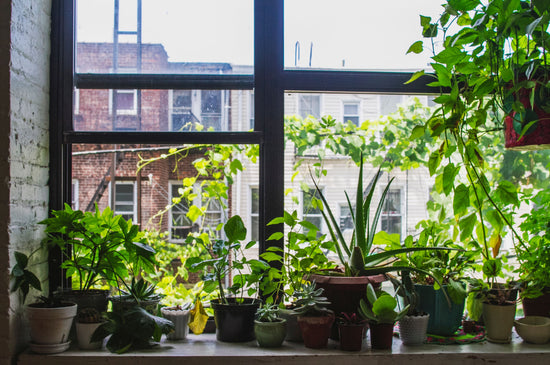How to Rescue and Revive Neglected Houseplants Like a Pro
Introduction: Giving Your Houseplants a Second Chance
Neglected houseplants don’t have to be a lost cause. With the right care and strategies, even the most forlorn greenery can bounce back to life. Whether it’s a Lifesaver Cactus, a Spider Plant, or a tropical Peace Lily, understanding the specific needs of your plants can make the difference between a struggling survivor and a flourishing beauty. If your indoor jungle is looking a little lackluster, don’t worry—this guide will help you assess, treat, and revive your houseplants like a pro. Explore Wekiva Foliage’s collection of houseplants to replenish or expand your collection.
1. Assessing the Damage: Know What’s Wrong
The first step in reviving a neglected houseplant is identifying the root of the problem. Here are common signs of distress and what they indicate:
- Yellowing Leaves: Often a sign of overwatering or poor drainage.
- Brown, Crispy Leaf Tips: Typically caused by underwatering or low humidity.
- Wilting: Can result from inconsistent watering, root rot, or pests.
- Pale or Faded Leaves: Indicates inadequate light.
- Stunted Growth: Suggests nutrient deficiencies or a root-bound plant.
Take time to inspect the soil, roots, and foliage to pinpoint the underlying issues.
2. Immediate Steps to Stabilize Your Plant
Once you’ve assessed the damage, take these actions to stabilize the plant:
- Adjust Watering Habits: Water thoroughly, ensuring excess drains out of the pot. If overwatered, allow the soil to dry before watering again.
- Prune Damaged Areas: Remove dead or severely damaged leaves to direct the plant’s energy toward healthy growth.
- Check for Pests: Look for tiny insects like spider mites, aphids, or mealybugs, and treat with insecticidal soap or neem oil.
- Repot if Necessary: If the roots are bound or the soil is compacted, repot into fresh soil with a slightly larger pot. Find the perfect pot for your plant here.
3. Tailoring Care for Specific Houseplants
Different plants require unique recovery strategies.
Tropical Plants (e.g., Peace Lily): Increase humidity by misting or placing a humidifier nearby. Check for overwatering, as these plants are sensitive to soggy roots.
Succulents (e.g., Lifesaver Cactus): Allow the soil to dry out completely between waterings. Ensure the pot has excellent drainage and ample light.
Trailing Plants (e.g., Pothos): Cut back leggy growth and place cuttings in water to propagate new plants. Position in bright, indirect light to encourage fuller growth.
Ferns: These moisture-loving plants bounce back best with regular watering and high humidity. Position them away from direct sunlight.
4. Long-Term Revival Strategies
Light Adjustments: Many neglected plants suffer from inadequate lighting. Move them closer to a window or supplement with grow lights for species like the Philodendron or Monstera deliciosa.
Nutrient Boost: Use a diluted liquid fertilizer to replenish nutrients. Start with a balanced fertilizer and feed every 4-6 weeks during the growing season.
Consistent Watering Routine: Avoid overcorrecting watering habits. Create a schedule based on the plant’s needs—succulents need infrequent watering, while tropical plants prefer consistently moist soil.
Increase Humidity: Use a humidity tray, group plants together, or add a humidifier for species like the Maranta or Calathea.
5. Preventing Neglect in the Future
Once your plants are on the mend, implement strategies to ensure they stay healthy:
- Set a Care Schedule: Use reminders or plant care apps to track watering, feeding, and pruning.
- Create a Plant-Friendly Environment: Position plants in areas with adequate light and stable temperature.
- Rotate Your Plants: Rotate pots weekly to ensure even light exposure and growth.
- Learn About Each Plant’s Needs: Research your plants individually to tailor their care, especially for rare species like the Huernia zebrina.
Conclusion: Breathe New Life Into Your Greenery
Reviving neglected houseplants is a rewarding process that can bring your indoor garden back to life. By assessing their needs, implementing targeted care strategies, and committing to long-term maintenance, you can transform struggling plants into thriving showcases. Ready to grow your collection? Shop Wekiva Foliage’s curated selection of houseplants and supplies and start your next plant revival project today.
FAQ: Reviving Neglected Houseplants
1. How long does it take to revive a neglected houseplant?
Depending on the severity of the neglect, it can take anywhere from a few weeks to several months for a plant to fully recover.
2. Can yellow leaves turn green again?
Unfortunately, yellow leaves cannot regain their color. It’s best to trim them to redirect the plant’s energy toward new growth.
3. What should I do if my plant is root-bound?
Repot the plant into a slightly larger pot with fresh soil, carefully loosening the roots before replanting.
4. How do I know if my plant is overwatered or underwatered?
Overwatered plants often have yellowing leaves and soggy soil, while underwatered plants may have brown, crispy edges and dry soil.
5. Can I save a plant with root rot?
If caught early, you can save a plant with root rot by trimming away damaged roots, repotting in fresh soil, and adjusting watering habits.





